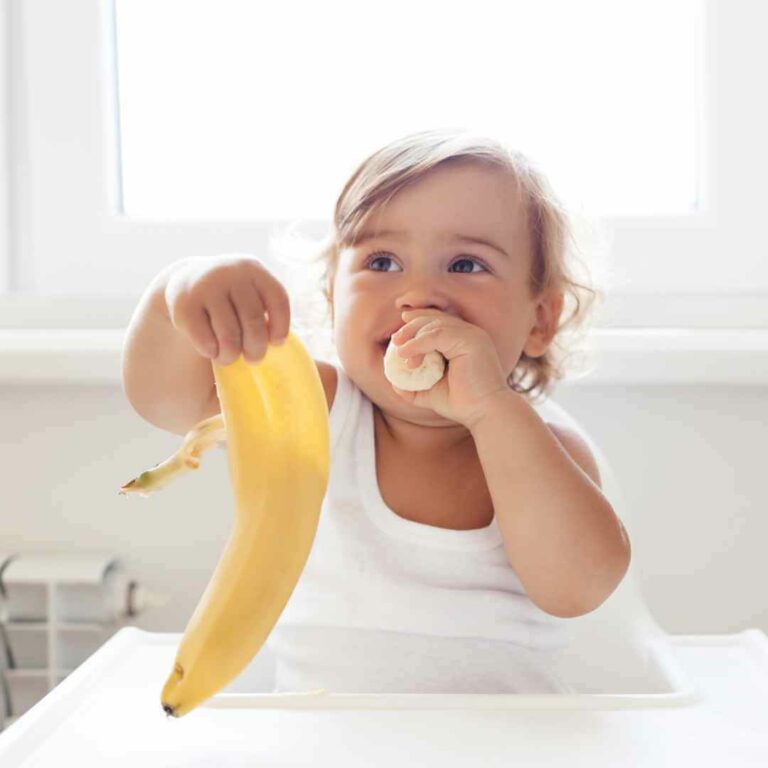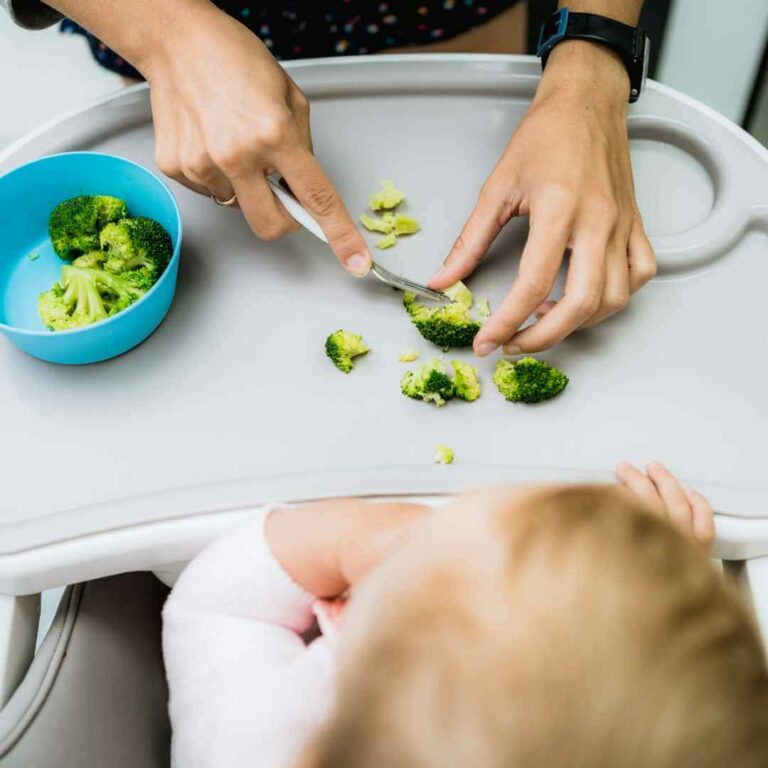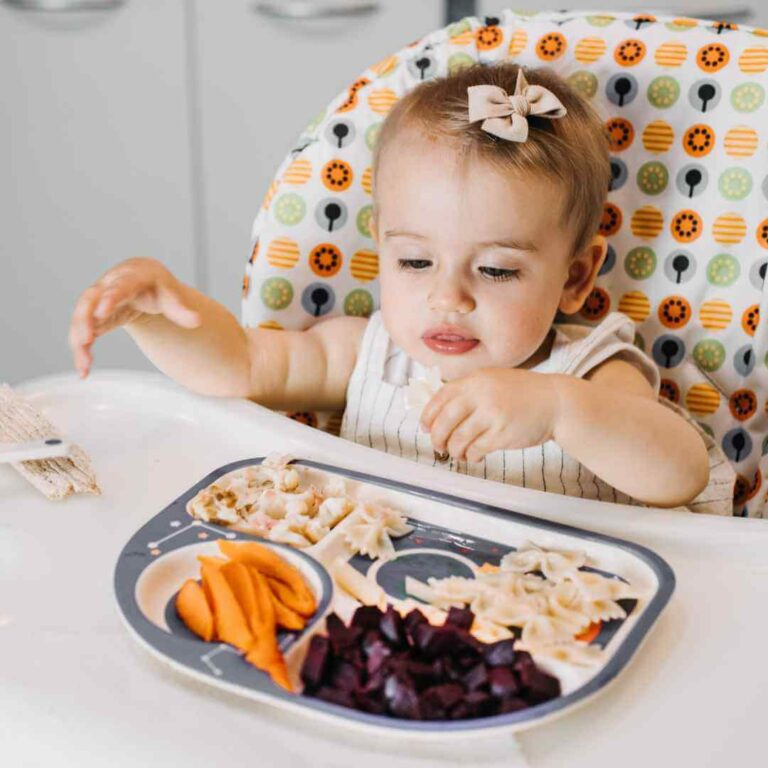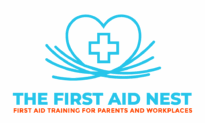Starting Solids from 4-6 Months

This can be an extremely exciting and anxiety inducing time!
However sometimes it can also bring high anxiety and maybe a tinge of sadness because we are moving away from those newborn days.
It is not unusual to start solids 5 months or a little sooner.
So here in this post The Nest has compiled the top 10 tips for introducing solids safely enjoy!
Reduce milk but do not stop!
Your baby still needs some milk they don’t want to be hungry when they first start solids. We recommend that you give a small milk feed just before you start those first foods. This way they are not starving hungry when they are just actually learning to eat so they won’t get frustrated and it won’t be a difficult experience for them.
Sit the baby on your lap
Baby is used to being held in your arms when being fed whether you have been breastfed or bottle-fed. So having the baby on your lap when you give them those first few spoonfuls could be very comforting and create a lovely experience for them.
The Spoon!
Baby spoons are shallow in nature and quite small, this is because the babies tongue is not able to dig out food from a deep spoon so they are made to be very shallow. So make sure you use the correct equipment.

Start with root veg!
We start weaning babies onto solids usually with root vegetables these are things like carrots, parsnips & sweet potatoes this is because they are naturally sweet without being too sweet and they have a nice smooth texture for those first tastes.
5. Baby lead weaning first foods
Whether you choose to use baby lead weaning or puree is completely up to you but if you are going to use the baby lead weaning technique then it’s really good to start with things like broccoli, broccolini or cauliflower because these can all be held like a small tree where they can chew off the leaves on the top. Make sure these are cooked to the point where they can just squished under your fingers.
Steam not boil
We believe the steaming keeps much more of the nutrients of the food rather than boiling. The bonus of steaming is that you can also use a very simple technique with a colander style pan over some boiling water or you can invest in an electrical steamer which you can use for the for seeable future for family meals.
Make sure baby is ready to eat.
Your baby needs to be ready to eat their first foods. They need to be able to sit in a highchair, however they may still need a little bit of propping up either side. What is essential is that they have good head control so that their swallow is not compromise. Make sure that your baby is actually showing an interest in feeding and that they’re looking at you and watching when you’re eating meals. If your baby seems very interested in this then they may be ready to start eating solids.

Bottle or cup?
Remember that you don’t have to go straight from breast to bottle. If you are breastfeeding you can go straight to a cup. Some babies just will not take a bottle so do not stress too much about this there is nothing wrong with going straight to a cup
9. Baby Choking First Aid
Make sure you know what to do if your baby chokes. First aid is extremely important and it is not something we are routinely taught as parents. Make sure you know the basic steps of what to do if your child chokes on some food or a toy.
10. Introducing Nuts to Baby
We now know that we must introduce all of the common allergenic foods before the age of 12 months. We can start with nut butter, peanut butter, fish and all of the top nine allergy foods from the age of 4 to 6 months right up to the age of 12 months. We now know there is strong research to show that this is the most effective way to reduce the rate of Childhood allergy.
Want more? We’ve got you covered…
Our Baby First Aid Courses
Our baby first aid courses are available in person in your home and online. We run classes in your home with groups of 2, 4 or up to 10 in Sydney & Melbourne and you can book in 3 easy steps!
- Pick your class
- Follow the prompts to purchase
- We will contact you within 24 hours to lock in your date of choice
Our First Aid Certificate Courses
We run most of the popular first aid courses Australia wide. HLTAID011 Provide First Aid, HLTAID009 Provide CPR, HLTAID012 Provide First Aid in an Education & Care Setting, RAMOAP (anaphylaxis), Mental Health first aid and CPR/LVR to name a few.
Book your public spot online or contact us if you have a group of 5+ people for onsite training.
Here are some other resources you may enjoy!
FREE GUIDE: Your Virtual Baby First Aid Kit
FREE GUIDE: Introducing Common Allergy Foods & Allergic Reactions
FREE Workplace Emergency Preparedness Plan: Grab this at the bottom of every page!
Follow for baby & child first aid and allergy info and tips on Instagram, TikTok & Facebook all @thenestcpr
